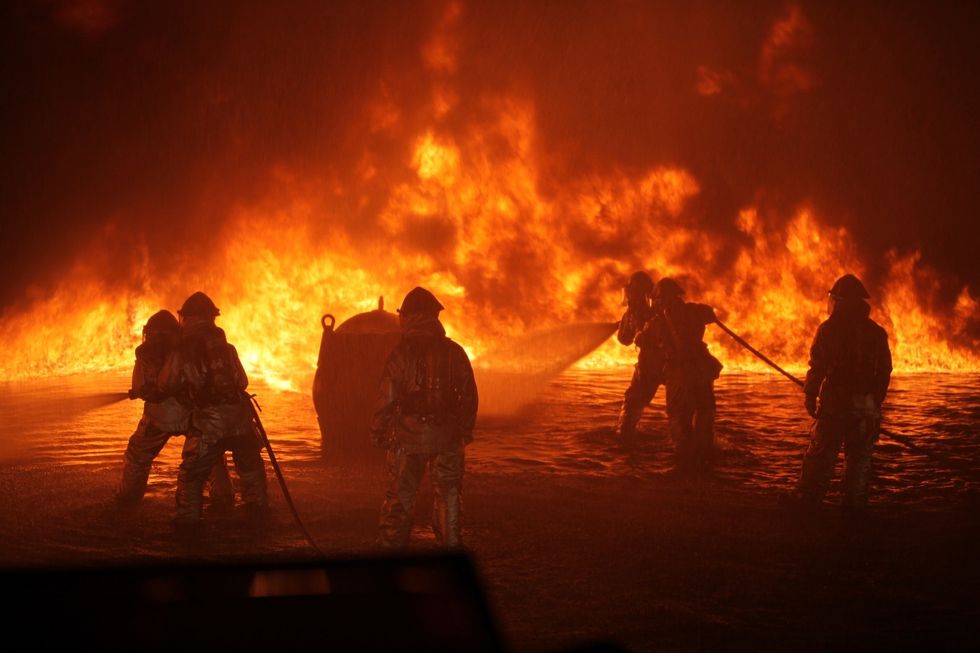When I was in elementary school I remember packing my bags to move from San Diego's suburbs into a hotel room downtown to escape a fire. I had no idea what was going to happen to my house, did I need to take everything I cared about with me? When would I be able to come back? There was a list of unanswered questions in my head as my family and I watched the smoke roll through the canyon visible from our kitchen window.
Then again, in eighth grade, my friends and I walked out of our chemistry class and looked up to see that the sky had turned yellow as the sun was filtered through a cloud of smoke. Kids on the East coast may get snow days off from school during the winter, but no matter the time of the year there's always a chance that a Californian is going to get to stay home for a fire day.
These are only two examples of the many fires that I've watched burn through Southern California, in both my hometown of San Diego and the larger neighborhoods of Los Angeles alike. After your first couple experiences watching forest fires being fought on the news and seeing the clouds of smoke rise over the horizon on the freeway, seeing smoke elicits no reaction. It's as natural as seeing a couple cars pulled over to the side of the road after an accident: you see it, you think "glad I'm not there," and you keep driving. That's dangerous.
According to the Center for Climate and Energy Solutions, wildfires in the U.S. in 2018 burn twice the area that average fires burned in 1970. In addition to this, the wildfire season is 78 days longer (and in California, it feels nearly year-round). With only a one degree Celsius increase in temperature as a result of global warming, fires in California have burned up to 312% of the area they burned before the increase. And this number isn't just significant for Californians. In Colorado, this figure has reached 656%.
In California it feels like the only two steps being taken to prevent destruction as a result of these fires are awareness and preparedness. All Californians know the risks of dropping lit cigarettes into dead grass, and all Californians recognize Smokey the Bear whenever they go on camping trips with their families. When fires start, it feels like firefighters are out doing routine work because we constantly see them on the news working to contain these catastrophes. It is clear based on the figures mentioned above that a third step, a jump towards preventing a global temperature increases, clearly needs to be added to the solution to this devastating issue facing not only the West coast but the entire Western region of the United States.





 Lumiere figure at the Disney Store at the Ala Moana Shoppi… | Flickr
Lumiere figure at the Disney Store at the Ala Moana Shoppi… | Flickr








 StableDiffusion
StableDiffusion StableDiffusion
StableDiffusion 10. Extra BlanketsJuwenin Home 100% Cotton Knitted Throw Blanket
10. Extra BlanketsJuwenin Home 100% Cotton Knitted Throw Blanket StableDiffusion
StableDiffusion StableDiffusion
StableDiffusion File:Kishlaru familie.jpg - Wikimedia Commons
File:Kishlaru familie.jpg - Wikimedia Commons Photo by Hanna Balan on Unsplash
Photo by Hanna Balan on Unsplash StableDiffusion
StableDiffusion black blue and yellow round illustrationPhoto by
black blue and yellow round illustrationPhoto by 





 woman holding glass jar
Photo by
woman holding glass jar
Photo by 





